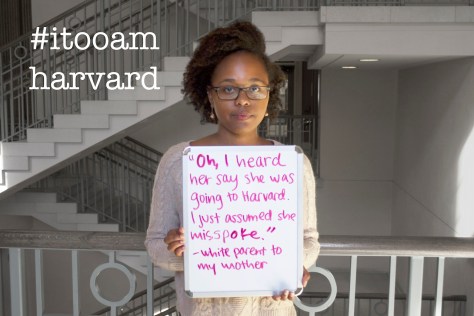Note: This post was originally posted on NJWV.

Michael Somoroff

August Sander
I’ve been seeing a lot of photography projects which involve erasing the subjects of other photos. Michael Somoroff’s take on August Sander is the latest entry to generate discussion here. As with the colorization thing, an awful lot of the reactions are the same sort of outrage about “respecting the original photographer” or “desecrating works of art.” Both of which tend to amuse me, especially when people get especially worked up about it.
I’m not a fan of Somoroff’s project—only the photo of the cook really works for me—but I’m not against this sort of erasure in general. Tweaking art and changing its context is something I love and wish more museums would show—for example, Princeton’s Itinerant Languages of Photography and Re-Framing History at Galerie Lelong. These shows treated photos and images as functional items which live and change as society changes rather than confining them as specimens to be collected and kept in mint condition.

Bence Hajdu

Fra Angelico

Bence Hajdu

Sandro Botticelli
Do most people notice the river, castle, and bridge on the background? Or that there’s an empty room behind Mary? Probably not. But those are all there on purpose. The details have been chose for a reason and it’s a lot of fun to think about. When the background include city details, you can also start to see depictions and documentation of architecture and technology which most people just miss.
—Looking at Backgrounds
The first thing I thought of when seeing the Sander discussion was Bence Hajdu’s Abandoned Old Master Paintings. I really like these and I mentioned them in a few discussions. A number of people agreed with me and found them a lot more interesting too. Where erasing the Sander subjects was troublesome, erasing the old master subjects not only didn’t bother them at all. I’d expect the anti-desecration people to be similarly upset but now I’m wondering if that argument is just an easy choice for a generic “I don’t like this” reaction.
For my part, I don’t like Somoroff’s project because I don’t think Sander’s work in particular lends itself to the erasure game. It’s not a portraiture thing but rather the few-props, simple backgrounds, and somewhat shallow depth of field means that there’s not much to look at besides the subject. Sander’s done his job well and left only the relevant details in the frame. The photo of the cook works for me because there’s enough extra detail for it to work here. In general though, the details are a bit too minimal.

Jan van Eyck

Larry Sultan
I’d be curious to see the same approach taken to portraiture where the entire frame is full of background detail. Unfortunately, most iconic photo portraits don’t have the kind of detail I’m picturing. There are plenty of old master portraits are like this—for example, the Arnolfini Portrait is exactly what I’m thinking of. It’s very clearly about the people in the room but there is also lots of other detail to look at and take in if you bother to look. It’s also not the way you’d take a formal photo now with random shoes in the foreground and everything in deep focus.
The language of photo portraiture, even environmental portraiture, is different and it took me a while to think of iconic photo portraits which have the right mix of subject with background information. Arnold Newman is too formal with his backgrounds being too-closely tied to the subjects. Rania Matar (not iconic but internet famous) emphasizes the backgrounds too much. I finally remembered Larry Sultan. Envisioning either Pictures From Home or The Valley (NSFW) with the subjects erased feels more interesting to me and suggests a way this kind of erasure could work with photo portraiture.

Josh Azzarella

Pavel Maria Smejkal

Robert Capa

Josh Azzarella

Pavel Maria Smejkal

Charlie Cole

Josh Azzarella

Pavel Maria Smejkal

Joe Rosenthal
The other interesting tactic on the erasure front involves modifying iconic photojournalism and news media images. Two examples here are Josh Azzarella’s and Pavel Maria Smejkal’s work, which, while not exactly the same, happens to overlap a lot. When I look through their projects, I’m struck by how recognizable some images are once I’ve put on the “do I recognize this landscape” hat. It amazes me that Mount Suribachi or wherever Capa got that soldier killed are so recognizable despite being such a small portion of the image.
These iconic photos do suggest that we’ve absorbed enough of the other details, even without there being anything specific, just through repeated exposure and references to the original images. Whether it’s the Olympic Village in Munich, a road near Trang Bang, the Valley of the Shadow of Death, or Kent State, they’re the very definition or photos which we know culturally and are continuously reminded of as they get remixed and referenced over the years.
This is another way that the old master paintings work with the erasures. They’re part of our visual canon so we just recognize them better. It may just be that, for me, August Sander isn’t part of the same shared visual culture. Or perhaps only a few of his photos, such as the cook, are.

Mishka Henner

Robert Frank
Which brings us to Mishka Henner. His approach to Robert Frank takes one of the most-famous photo projects and remixes it through erasure. But it’s about more than just erasing the subjects to reveal the backgrounds. Henner is getting into the remix thing and reveals new compositions within Frank’s originals. Henner’s work feels a bit gimmicky to me but that’s more of a taste-based reaction. I’m good with the remix concept. I’m also good with riffing on a classic of the medium. I’m just not liking these specific results. It’s okay, liking isn’t the only thing.
Thinking about erasure as only part of the remix culture though opens up a lot of other projects which are worth considering for comparison—in particular, all the rephotography projects.

Pavel Maria Smejkal

Annie Leibovitz

Alexander Gardner
That Gardner’s* Confederate “Sharpshooter” photo has been subjected to both the erasure treatment as well as rephotography makes this connection easy. We recognize the image without the subject. And we recognize the place over 150 years later. Of all the photos in Annie Leibovitz’s Pilgrimage, her photo of Devil’s Den** is probably her best example of explicitly revisiting both national myth and photographic myth. The location still resonates and seeing what it’s like now changes my understanding of the original. It’s no longer just something from my history books. It still exists and I can see the history in it.
*Or O’Sullivan, according to the Library of Congress.
**Which I’m unable to find a good version of anywhere.

Christopher Rauschenberg

Eugene Atget
Rephotography is something else that could seem like a gimmick but, in the right hands, ends up being something much more powerful. This works especially well when the subjects being rephotographed have such a strong sense of place already. Christopher Rauschenberg’s Paris Changing where he rephotographs Atget is a great example here. It takes the past into the present, showing how much has changed, and how much hasn’t.
The pairs are really interesting to look at because they also give you an additional appreciation for what Atget was doing. Atget isn’t a photographer who most new photographers get into. It usually takes a while to start to get him but once you do you’re seeing everything much much differently—at almost a different time scale. It’s no surprise that Rauschenberg found himself shooting Atget-like photos at the same time he was rephotographing Atget.
This same impulse is what makes looking up Stephen Shore’s locations in Google Street View to be so interesting. In this case it’s not the exact replication but being able to explore the area and see what made the frame’s Shore chose to be so uncommon. Really seeing why Shore chose certain views and thinking exactly about what makes them work can only happen if you play around in the area.

Hebe Robinson
If Google Street View isn’t available, the rephotographing which includes the original as part of a wider view of the scene does a similar job at showing context. Unlike the tightly-composed Atget or Shore photos, this approach often seems to be used to take vernacular photos and place them in a larger setting as a way of telling stories about the past and giving them something to anchor to in the present. Our stories and memories need these anchors so we can remember them and pass them on.

Mark Klett and Byron Wolfe
Rephotographing can also be used to remix content in order to reveal previously-unseen connections. Mark Klett and Byron Wolfe in particular are the experts in this area. Rather than just going wide, their work incorporates original photos into new panoramic images which, in addition to just showing the wider view of the area, either show how one photographer worked a scene or how two photographers happened to take photos from about the same spot.
I particularly like the panorama joining Edward Weston to Carleton Watkins since the two photographs by themselves don’t appear to be related at all. It’s always interesting when two masters photograph from the same place. It’s especially interesting when it’s not apparent that this is the case. Making that connection is something you almost have to be onsite for.
Similarly, Klett writes in the Timothy H. O’Sullivan book about discovering how some of O’Sullivan’s photos were taken from the same mountain top, only looking in opposite directions, and how this discovery could only be noticed from the mountain top and wasn’t apparent in the images themselves. He also writes about discovering how O’Sullivan would cant his camera for certain scenes and how the act of being in the field helps him learn about what O’Sullivan was doing.

Mark Klett and Byron Wolfe
Klett and Wolfe proceed to remix the old photos to show the combined results of a photo session as an unintentional panorama. The resulting new compositions are fascinating to look at since they both help me see how O’Sullivan or Ansel Adams or whoever worked and suggest David Hockney “Joiners”* in that they pick out how the eye wanders and gets interested in specific details while surveying a scene.
*Only these joiners are using 8×10 negatives.
In all these cases, Klett and Wolfe take the old photos and show us something new through their remixing. None of it is a gimmick, we see and notice new things as the context changes around the images. At its best, this is what remixing does, it adds, transforms, and makes us think about everything in a new light. This isn’t desecration of art, it’s allowing it to live.















































